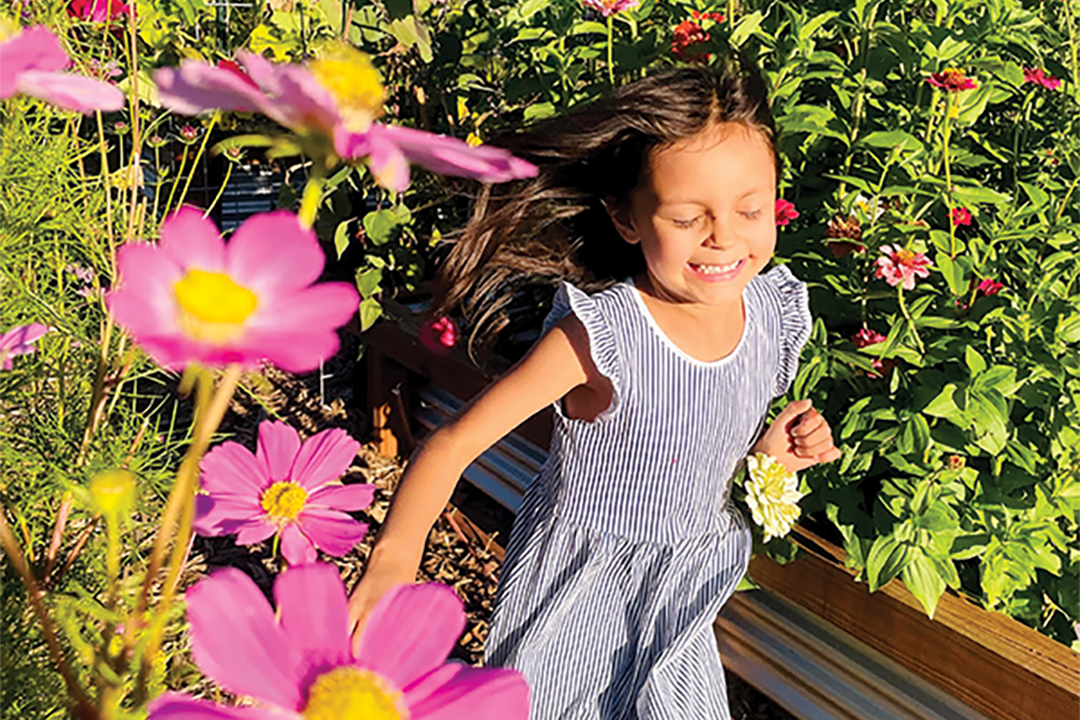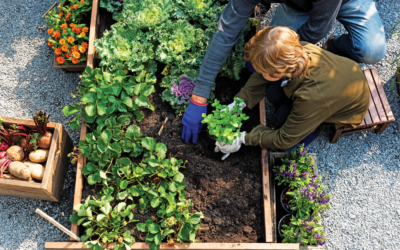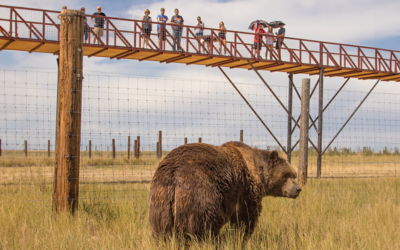It’s easy in this hyper-connected era to lose connection with some of the things that really matter: Our sense of community, our awareness of the background chorus of birdsong on spring mornings and, of course, the land.
Our modern, “always on” lifestyle can leave us feeling disconnected, fragmented and anxious. But it doesn’t have to be that way.
Here, three Northern Colorado gardening nonprofits share how they help the community grow where it gives. While they complement one another’s work in meaningful ways, the strongest thread between them is that they each seek to nurture forms of authentic connection.
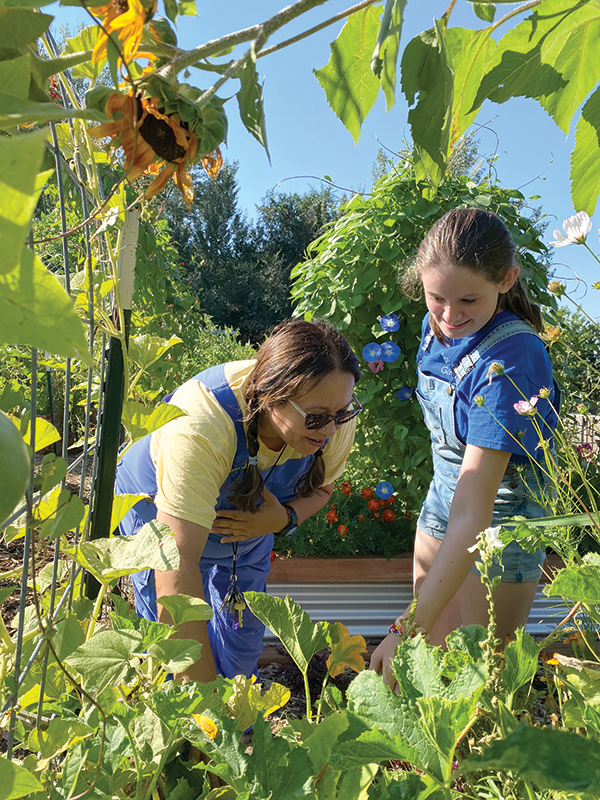
Loveland Youth Gardeners
Loveland Youth Gardeners is a place where youth ages 3-21 can gain confidence while learning practical skills in horticulture and environmental stewardship. The organization offers a wide variety of programs for youth to spend restorative time outdoors as part of a supportive community. These include service days on the farm as well as programs in horticulture education, horticultural therapy and skills and leadership training tailored to middle schoolers, high schoolers and young adults.
Executive Director Kelly Robenhagen has a background in social work and nonprofit management that fuels her sense of purpose. The organization serves every young person who wants to spend time on the farm, but there is an emphasis on working with youth who face challenges, whether it’s complex trauma, living in poverty or mental and behavioral concerns.
Time outdoors working with your hands “just makes you feel alive,” Robenhagen says. “It connects our students to the environment, but it also connects them to their food system.”
Loveland Youth Gardeners built its youth-led Good Enough Farm in 2021, which has transformed the nonprofit’s programming. There, the young gardeners are immersed in a world of tangibles: real-life friendships, farm tools, soil and all the hands-on work that comes with small-scale farming.
Likes, follows and shares are irrelevant on the farm, as cultivating crops for donation or to prepare farm-fresh food results in a greater sense of pride and agency. Robenhagen believes this can have a transformative effect on kids who have experienced anxiety and adversity.
“It’s really cool to know that you have the power to cultivate something that supports life,” she says. “I think the hard skills that people get out of their time with us—learning how to grow and care for plants, how to do irrigation, how to do small construction projects—those things are great because they’re practical skills, but I also think they help with self-esteem.”
Loveland Youth Gardeners reports that youth involved with their Grow & Give Program, a partnership with Colorado State University, donate 85 percent of their produce to local families in need. Since the creation of the Good Enough Farm, this has amounted to 5,000 pounds of donated produce.
They also sell produce at the farm stand, which helps connect the young gardeners with the greater community. Farm stand dates and times can be found at lovelandyouthgardeners.org/buy-lyg-produce.
“We’re really trying to reach students who sometimes don’t know exactly where they sit in the community,” Robenhagen says. “When they’re with us, they know they belong.”
How to Get Involved
Robenhagen describes volunteers as “the beating heart” of Loveland Youth Gardeners. Volunteer positions are always available, and students as young as 13 may volunteer unaccompanied. Another way to give to the organization is by attending their 21st Annual Loveland Garden Tour & Art Show from 8 a.m.-2 p.m. on Saturday, June 14. Registration is also open for the summer youth programs.
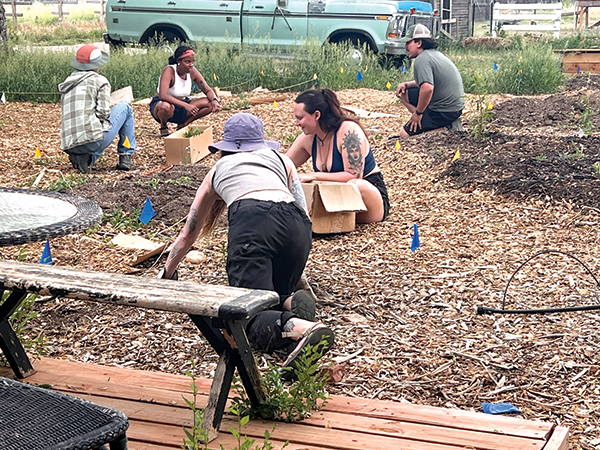
Sagrada Botanical Gardens
Located on two acres of land on West Mulberry Street in Fort Collins, Sagrada Botanical Gardens has a mission to nurture and restore nature—and our relationship with it.
“People always ask me, ‘Why do you call them gardens and not farms?’” says Heather Goldstein, co-founder and executive director. “I really wanted to focus on food forests and permaculture and the decolonization of farming. And what it looks like for humans to live in our environment, not on our environment.”
Goldstein’s background in education and interior design—including biophilic design, a method that mimics nature to improve well-being—gave her the vision for Sagrada Botanical Gardens, a place where people can participate in regenerative gardening, either as a solo volunteer or with a group. Part of her mission is to bring community members together through shared experiences, whether it’s planting seeds, building fences, laying compost or spreading mulch.
“Sagrada Botanical Gardens was born of the idea that when you walk out your door, you are a part of the land, and the land is a part of you,” she says. “We are here to be in relationship with [the land] and have a little bit of sovereignty over our decisions as a community.”
The organization broke ground in the spring of 2023, so it’s still in growth mode. Developing two acres of land with little-to-no heavy equipment is demanding work, but that hasn’t kept Goldstein from planning volunteer potlucks and workshops on topics such as heirloom edible flowers and medicinal plants. She’s currently organizing events for the upcoming months.
How to Get Involved
Sagrada Botanical Gardens is seeking volunteers to help develop its remaining 1.25 acres as well as maintain and cultivate the developed land. Volunteer shifts run from 5-8 p.m. on Wednesdays and 9 a.m.-2 p.m. on Saturdays during the summer and fall.
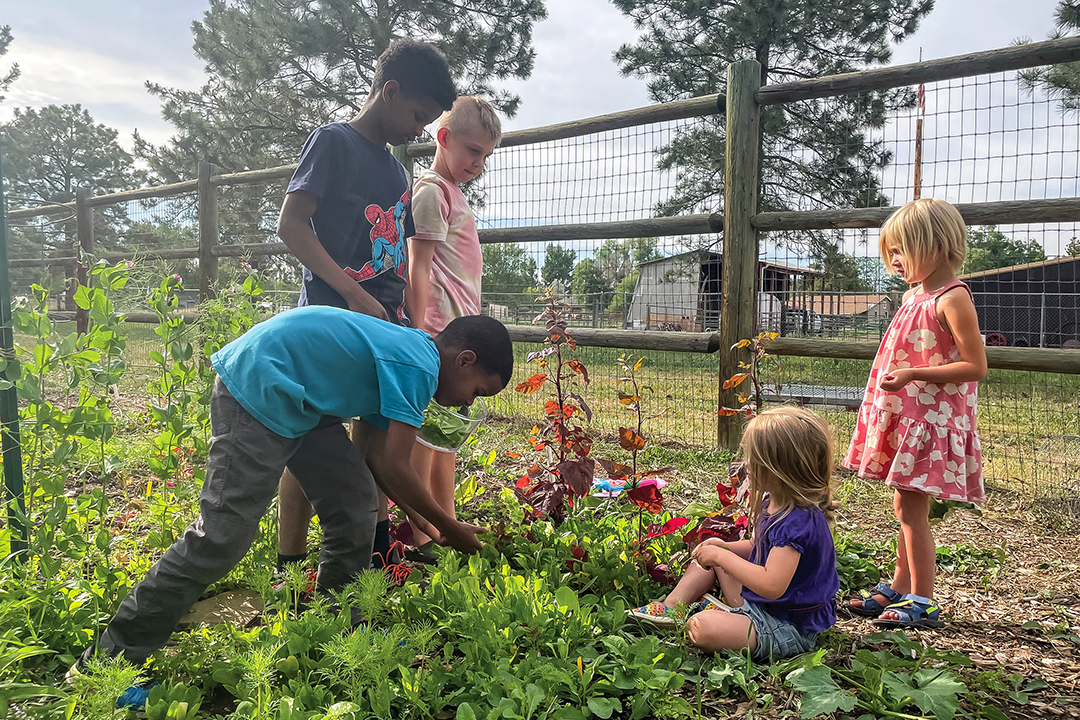
The Vegetable Connection
The Vegetable Connection gives low-income families access to fresh produce, education and support to redefine their relationship with food and live healthier lives. They do this through the community-supported agriculture (CSA) model, partnering with small farms that allow consumers to purchase shares near the outset of the growing season.
“We work with low-income families, and we get them access to a CSA share, and we take care of the financial cost of it,” says Program Director Jill Munson. “If you hit a certain threshold, there’s a co-payment, but we make sure money isn’t an issue. That’s really important because that allows families to take ownership of their vegetable intake and connect to a local farm.”
In Munson’s nine years at The Vegetable Connection, the program has expanded from serving 13 families to 56 families per season. The organization has partnered with more than 10 farms throughout Larimer County to make that possible.
The complementary service they provide is a nutrition education program, which is available to everyone who receives a CSA share through the nonprofit. They also offer cooking classes and workshops and organize fundraisers throughout the summer.
This story wouldn’t be complete without referencing an obscure vegetable, so here’s one: hakurei turnips. Also known as a white turnip or salad turnip, hakurei turnips have a fast seed-to-harvest-to-plate scenario, Munson says.
“They’re actually my kids’ favorite vegetable,” she says. “You will never find them in the grocery store, but most of the farms grow them. Even if you’re a backyard gardener, you can grow them.”
How to Get Involved
Munson urges readers to “connect to their local farm.” Personal decisions, like joining a CSA or visiting a local farmers market, can make a big difference in strengthening a community’s resiliency, she says. The Vegetable Connection also invites the public to attend their fundraisers and is currently seeking sponsors, board members and volunteers. Volunteer roles are varied and generally involve organizational and creative roles.


